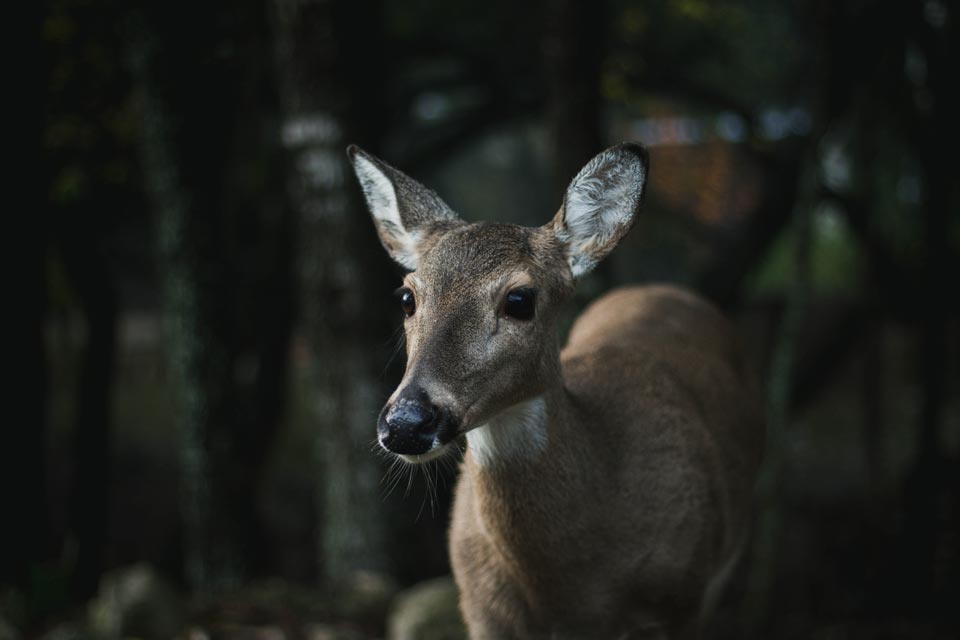This week was a short week. We worked Monday and Tuesday collecting the last of our data and I spent Wednesday and Friday cleaning out the trucks with a little bit of help (thanks Dustin, Ben, and Ryan!).
I found two plant species new to me this week—Wild False Indigo (Baptisia australis) and Prostrate Tick Trefoil (Desmodium rotundifolium). (Do you ever wonder who comes up with these names?!) Both are in the legume family (Fabaceae). They weren’t in plots, but they were nearby.
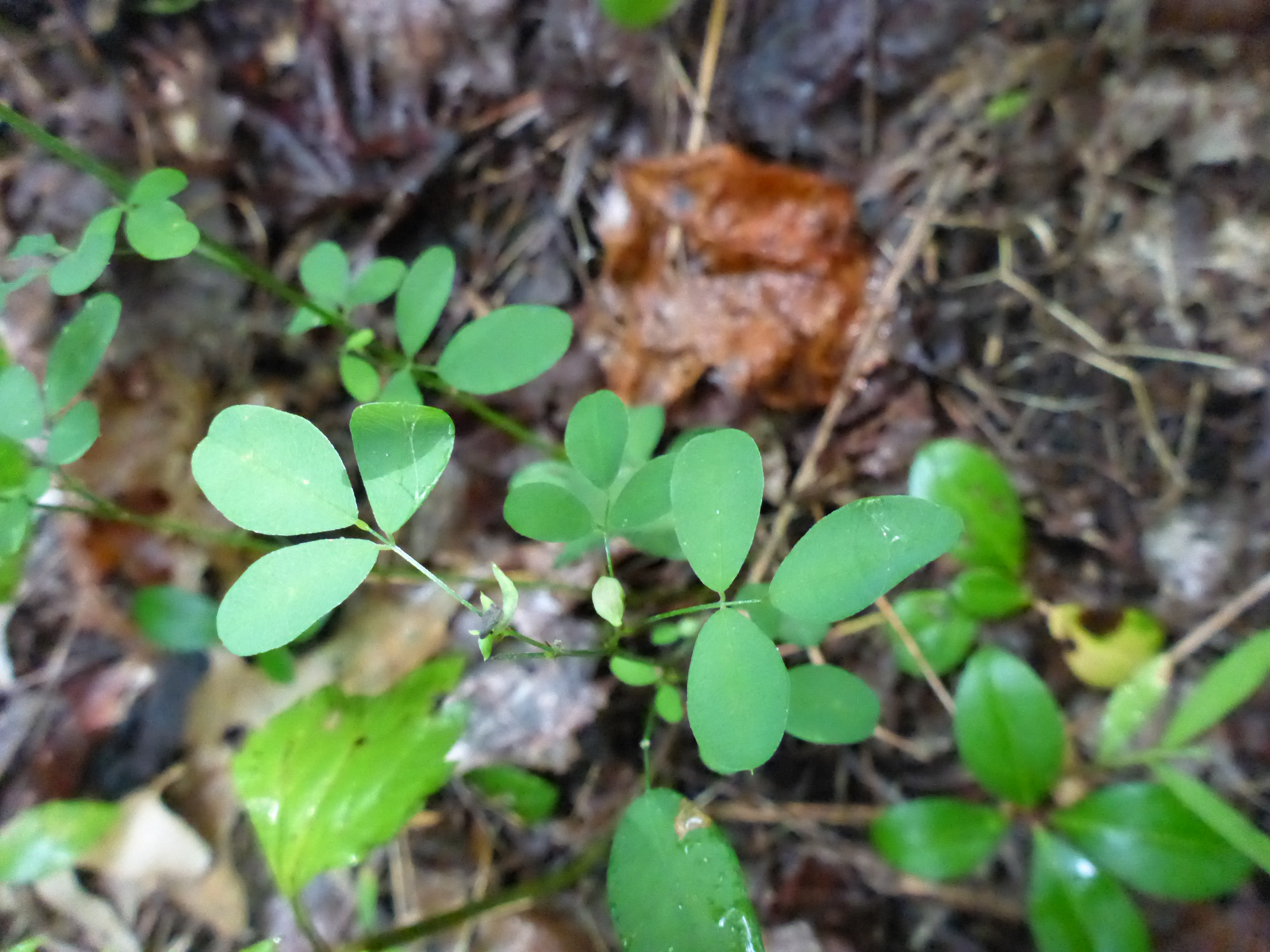
Wild False Indigo
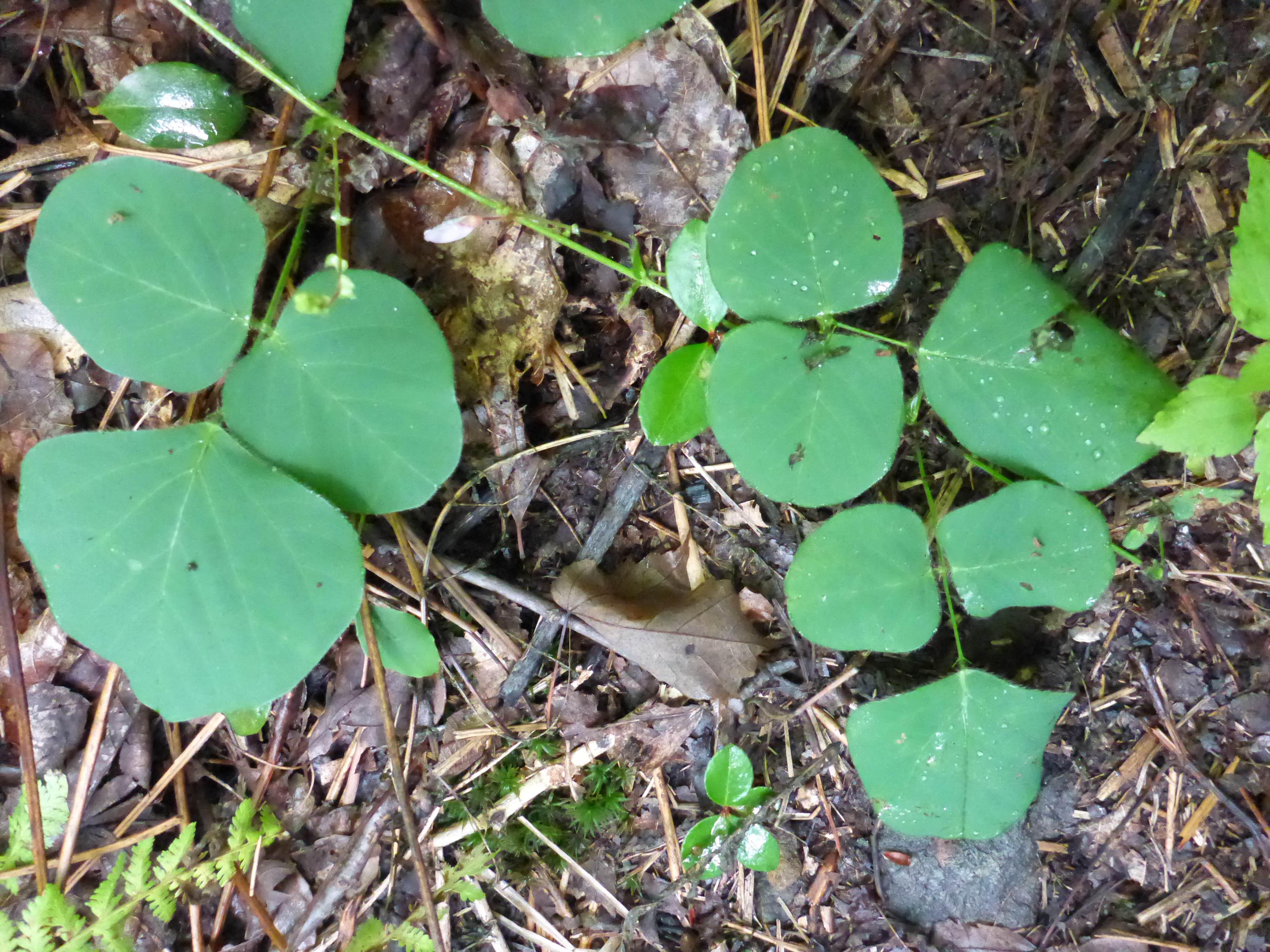
Prostrate Tick Trefoil
To illustrate our productivity for the year, I went ahead and compiled/summarized the data we collected [Here come those eye-opening cumulative totals!]. These “fun facts” are below.
This year we:
- collected 728 soil samples from 223 subplots (an average of 3.25 samples per hole)
- took 1,407 canopy photos at 264 subplots (an average of 5.33 photos per subplot)
- measured 2,094 trees (26 different species)
- cataloged 75 different species of herbs, shrubs, grasses, sedges, ferns and vines
- counted 12,728 seedlings (24 different species)
- found 2 species of herbs new to our dataset—narrow-leaf cow wheat (Melampyrum lineare) and smooth forked nailwort (Paronychia canadensis) which is so uncommon in Pennsylvania we had to ask an author of The Plants of Pennsylvania for help!
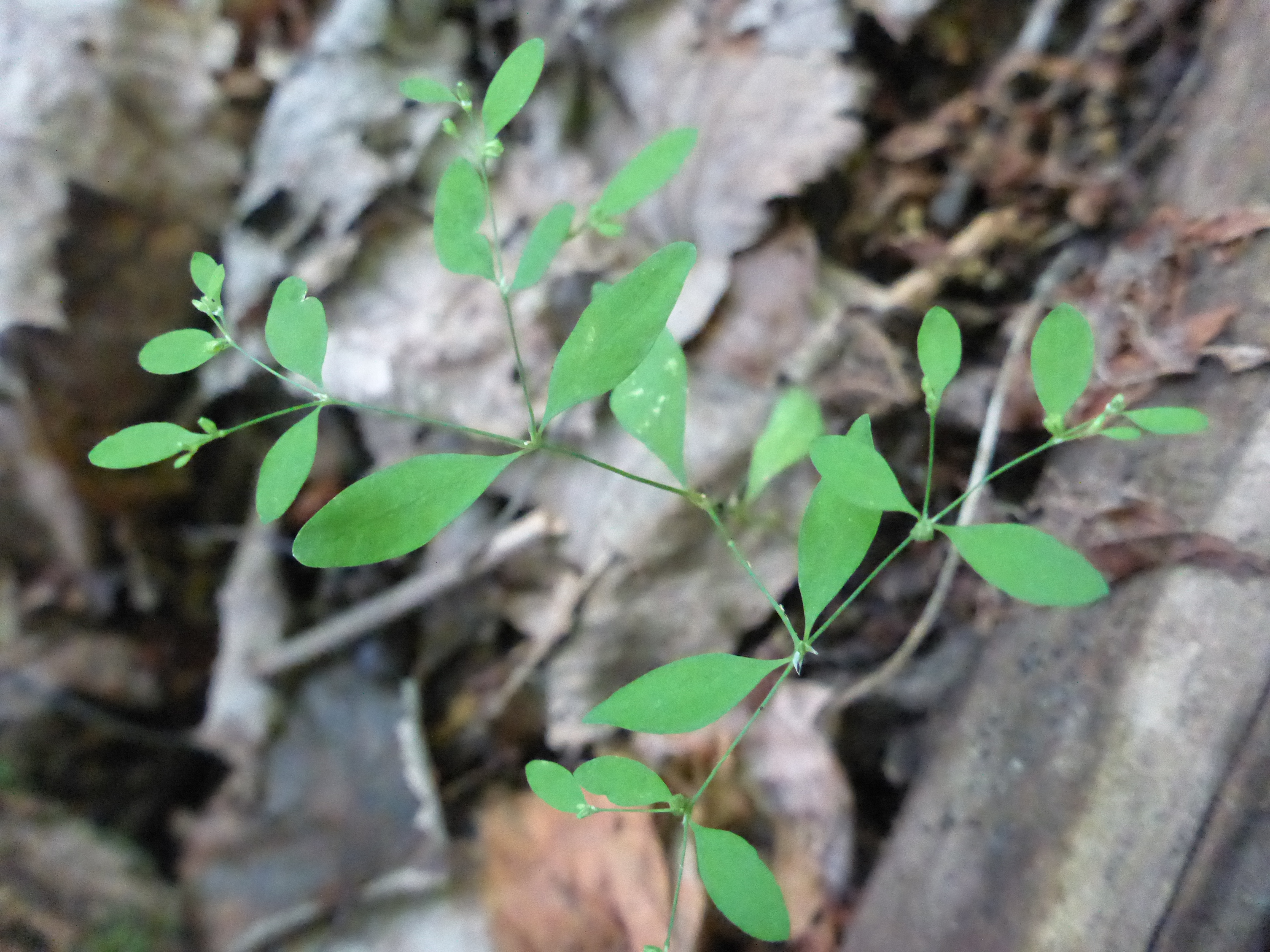
Smooth Forked Nailwort—our stumper for the year!
This year, the most commonly encountered tree species was red maple (26% of all trees measured), followed by chestnut oak (21%), black gum (12%), black birch (10%), red oak (8%), eastern hemlock (5%), sassafras (4%), and eastern white pine (3%). Other species (including other species of oaks and all species of hickory) each accounted for 1% or less of all of the trees measured.
Seedlings tell a similar story. Of the seedlings greater than 1 foot tall (little stuff skews the data) the most common was red maple (36%) followed by chestnut oak (26%), red oak (12%), sassafras (8%), and black birch (7%). Each of the other 18 species accounted 3% or less of the seedlings counted.
Unsurprisingly, the most common non-tree species at all sites was mountain laurel. 1/5th (20%) of all non-tree species we measured was mountain laurel (that’s a lot of bushwhacking!). Blueberry and huckleberry were a close second and third (19% and 14%, respectively). I guess they would have taken silver and bronze at the most recently concluded Rio Olympics. Teaberry (11%) and witch hazel (7%) wouldn’t even have reached the podium. Each of the other species was 4% or less, including Indian cucumber-root, our most commonly encountered deer-preferred forb (2%).
These data are quite comparable to past years and should go a long way in helping better manage state forest lands once they are fully analyzed.
Speaking of analysis… I should probably go and start that ASAP! Thanks for following with the Veg Crew Diaries!
This Week’s Deer Plate Special!
Common Name: Elderberry
Scientific Name: Sambucus racemosa (red elderberry) or Sambucus canadensis (black elderberry)
Description: A tree-like deciduous shrub with opposite branching and compound leaves. Leaves have 5-7 leaflets, arranged oppositely with the exception of the terminal leaflet, which grows from the end of the leaf stem (petiole). Flowers have 5 parts—appearing somewhat star-shaped— and are produced in early to mid-spring. The flowers of elderberry are highly branched, forming a panicle in red elderberry and a corymb in black elderberry. Both species fruit in early summer. The berries of black elderberry are edible, but the red berries of red elderberry should be avoided. All plant parts (roots, stems, leaves) of both species should not be consumed and are toxic.
Size: Mature stems are usually > 6ft tall and highly branched forming a dense shrub. Young individuals are smaller and usually single-stemmed. The species will “sucker” sending up many shoots from the same underground root system.
Wildlife Value: Flowers are visited by butterflies and insects. Elderberry fruit is a prized food source for numerous birds, small mammals, bears, and even turtles. Because the foliage is bitter and toxic (esp new growth in the spring), it is found on many “deer resistant” shrub lists. However, they have been known to browse foliage and twigs later in the summer as the plant “sweetens” over time.
The top 2 photos below are of red elderberry, one of the two species mentioned above. The bottom photo of elderberry fruit is of the edible black elderberry.
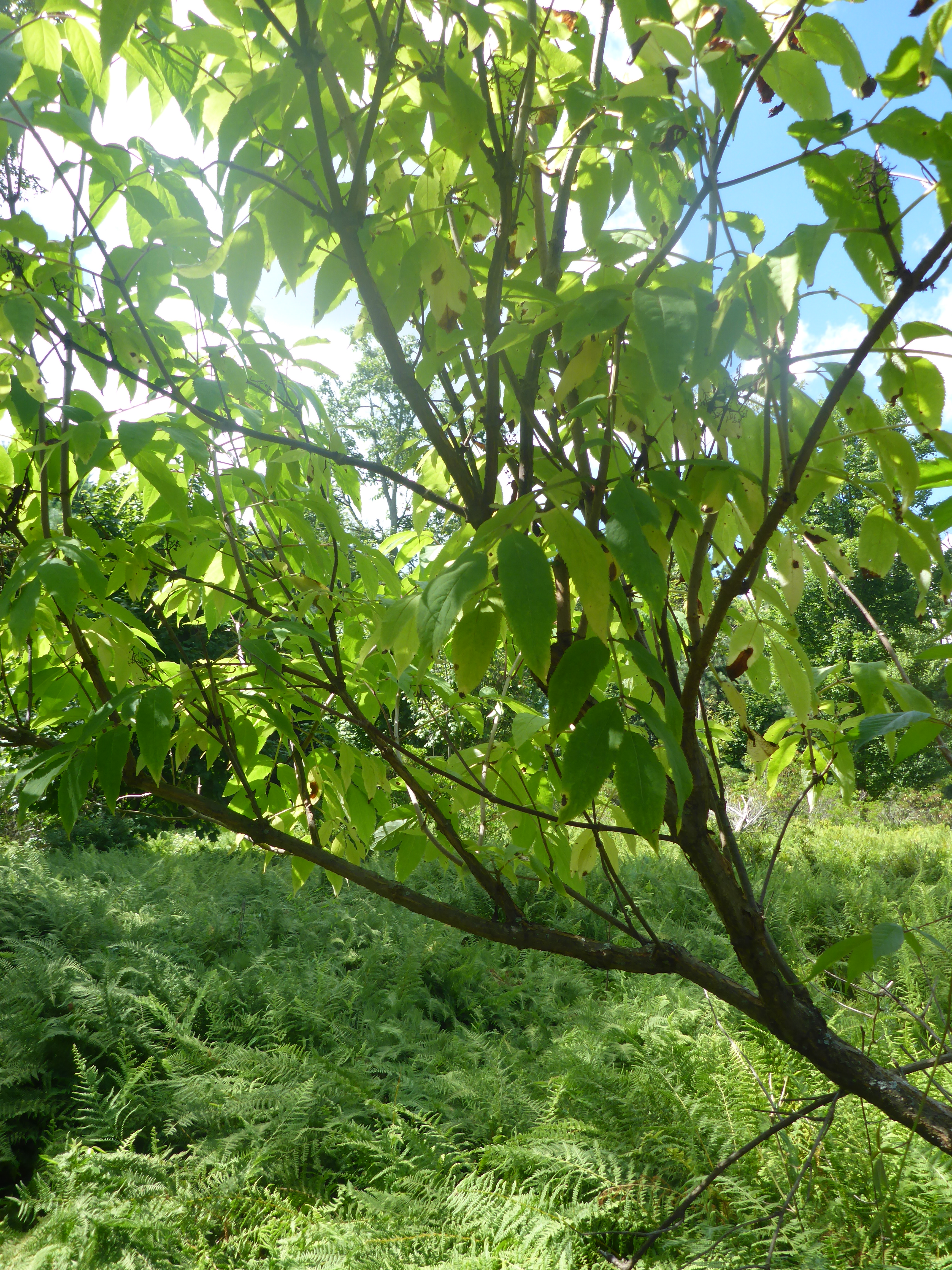
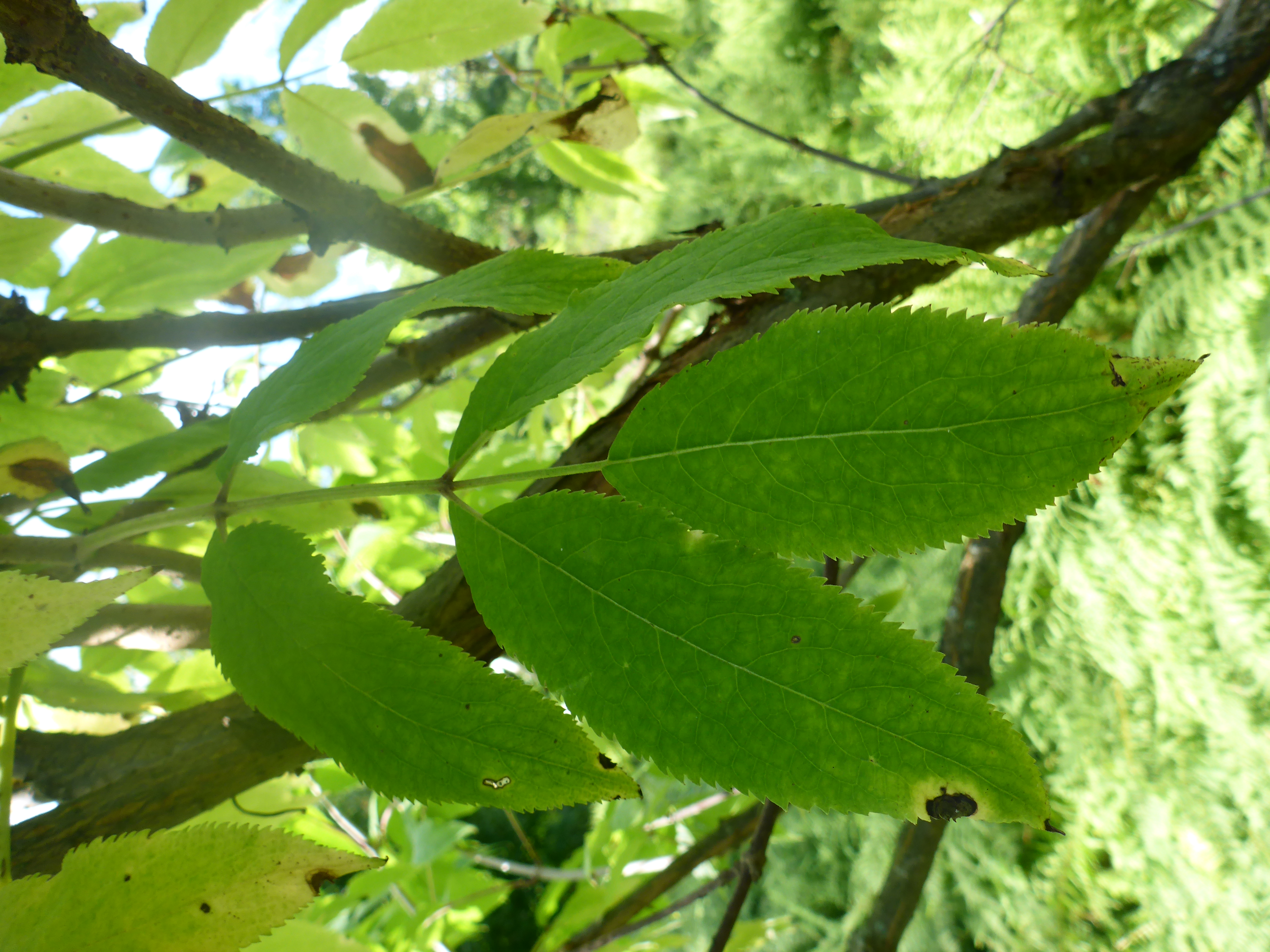
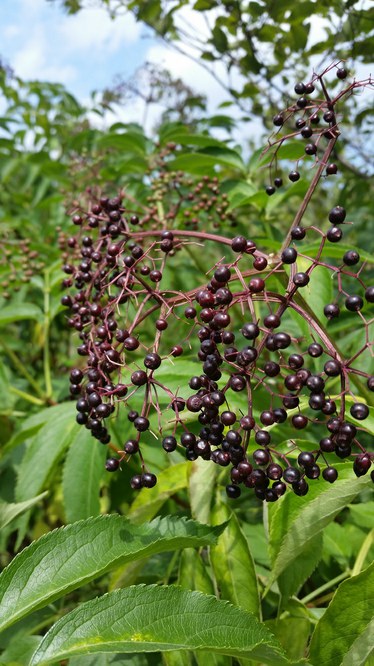
Subscribe to the Deer-Forest Blog by email
And Follow us on Twitter @WTDresearch
